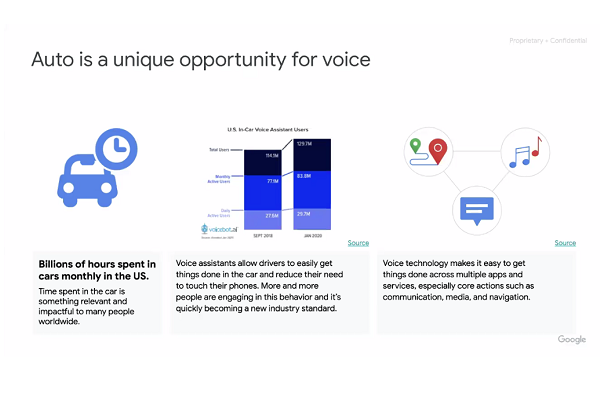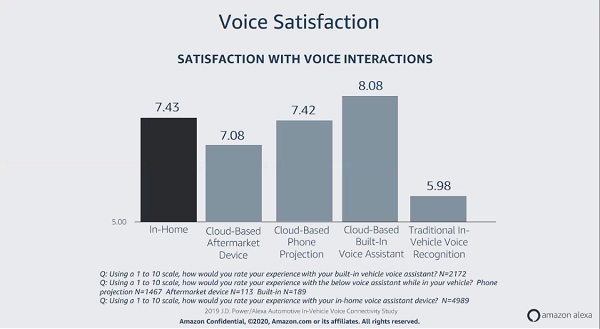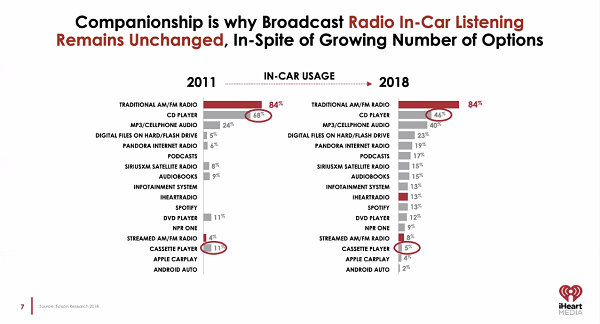3 Things We Learned at the Voice of the Car Summit Day 1
The COVID-19 pandemic may have canceled the physical version of this year’s Voice of the Car Summit. Still, organizer Bradley Metrock didn’t let the coronavirus prevent him from bringing the conference online. The first of the summit’s two days brought a crowd together on Zoom to listen and watch presentations from car manufacturers, voice assistant developers, audio content makers, and others in the space. Though the digital happy hour at the end of the day wasn’t quite as festive as an in-person meetup, the conference did very well in sketching out the current and potential future shape of vehicular voice AI. Here are a few of the things we learned during the summit. Be sure to check back tomorrow for the concluding wrap-up.
Opportunities Arise as More People Try Car Voice AI
 People spend a lot of time in the car and they want to spend that time in productive and interesting ways. Google Assistant head of automotive and emerging markets Austin Chang discussed during his presentation the many ways people like to spend their time while driving and how voice assistants make much of it possible. More and more people are discovering what voice can do. Chang cited a survey by Voicebot that found the number of people in the U.S. using voice technology while driving rose from about 114 million to almost 130 million between the fall of 2018 and the beginning of 2020. That’s partly a function of more people wanting to use voice assistants in the car, but it’s also because voice assistants are rapidly becoming a standard feature for the industry that is baked into the plan for almost every new car rolling out of the factory, Chang said.
People spend a lot of time in the car and they want to spend that time in productive and interesting ways. Google Assistant head of automotive and emerging markets Austin Chang discussed during his presentation the many ways people like to spend their time while driving and how voice assistants make much of it possible. More and more people are discovering what voice can do. Chang cited a survey by Voicebot that found the number of people in the U.S. using voice technology while driving rose from about 114 million to almost 130 million between the fall of 2018 and the beginning of 2020. That’s partly a function of more people wanting to use voice assistants in the car, but it’s also because voice assistants are rapidly becoming a standard feature for the industry that is baked into the plan for almost every new car rolling out of the factory, Chang said.
Needs Satisfaction
 That people are using voice assistants in the car more doesn’t mean they are thrilled about it, however. Alexa Auto chief evangelist Arianne Walker explained during her presentation that there are several barriers to people being happy about using a voice assistant while driving. Traditional in-vehicle voice recognition garnered by far the lowest level of satisfaction in a survey about voice conducted by Amazon. Sometimes it’s because the car voice assistant doesn’t work as it should, sometimes it lacks features that drivers are looking for, and sometimes drivers claim the system is perennially out of date compared to the voice assistant they use in their homes. Walker suggested some solutions that Amazon is pursuing, such as better ways of upgrading software and partnerships that bring features like buying gas by voice to the car, but emphasized that it will be some time before people are likely to be as happy with using voice assistants in the car as they are in other scenarios.
That people are using voice assistants in the car more doesn’t mean they are thrilled about it, however. Alexa Auto chief evangelist Arianne Walker explained during her presentation that there are several barriers to people being happy about using a voice assistant while driving. Traditional in-vehicle voice recognition garnered by far the lowest level of satisfaction in a survey about voice conducted by Amazon. Sometimes it’s because the car voice assistant doesn’t work as it should, sometimes it lacks features that drivers are looking for, and sometimes drivers claim the system is perennially out of date compared to the voice assistant they use in their homes. Walker suggested some solutions that Amazon is pursuing, such as better ways of upgrading software and partnerships that bring features like buying gas by voice to the car, but emphasized that it will be some time before people are likely to be as happy with using voice assistants in the car as they are in other scenarios.
Radios are On
 On the other hand, people are very comfortable when it comes to listening to the radio in the car. More ways of getting audio entertainment than ever before don’t matter. In 2011, 84% of people said they listen to the radio in the car and that percentage remained the same seven years later in 2018, according to a survey by iHeartMedia. Crucial to radio in keeping and even adding listeners is trust and comfort, explained iHeartMedia’s president of strategic partnerships Michele Laven and senior vice president of business development and partnerships John Vermeer during their presentation. People really connect with those they hear on the radio, with almost three-quarters perceiving a deep connection with their favorite radio personality.
On the other hand, people are very comfortable when it comes to listening to the radio in the car. More ways of getting audio entertainment than ever before don’t matter. In 2011, 84% of people said they listen to the radio in the car and that percentage remained the same seven years later in 2018, according to a survey by iHeartMedia. Crucial to radio in keeping and even adding listeners is trust and comfort, explained iHeartMedia’s president of strategic partnerships Michele Laven and senior vice president of business development and partnerships John Vermeer during their presentation. People really connect with those they hear on the radio, with almost three-quarters perceiving a deep connection with their favorite radio personality.
Follow @voicebotai Follow @erichschwartz
How Will Coronavirus Impact Voice Industry Conferences – Erickson and Metrock Weigh In
Four Takeaways From VOICE 19 & Links to Stories That Shaped The Discussions








